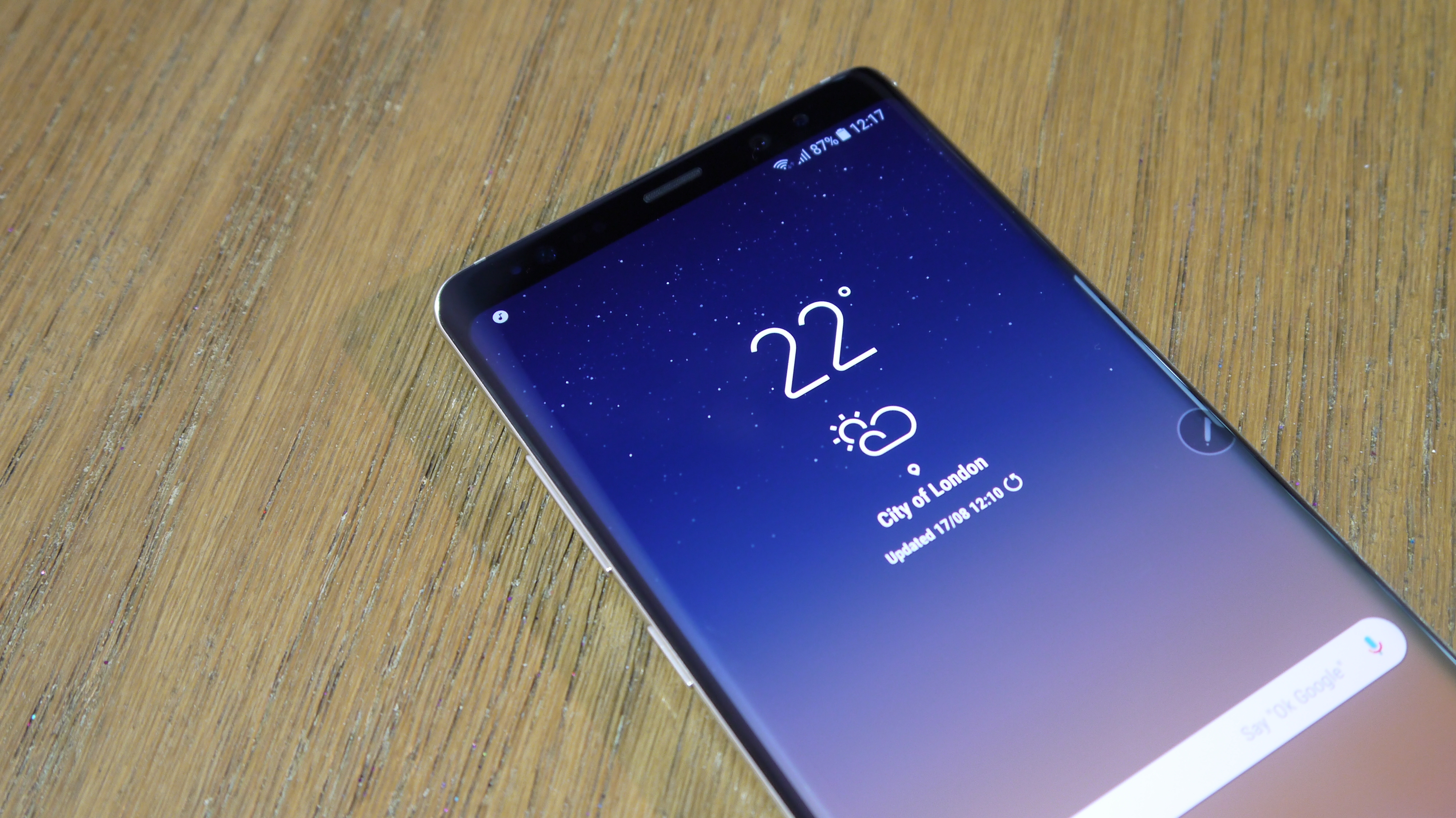Samsung Galaxy Note 9 and Huawei Mate 11 could both have in-screen fingerprint scanners

This year’s early flagships have stuck with physical fingerprint scanners, but 2018 could still be the year of the in-screen scanner, as both the Samsung Galaxy Note 9 and Huawei Mate 11 are rumored to pack one.
Samsung has been rumored to be working on building a fingerprint scanner into the screens of its phones for a while now, and though the last update suggested the Note 9 wouldn’t get one, industry sources speaking to The Korea Herald are now saying that it still might.
“Samsung Display has prepared three or four solutions for Samsung Electronics to embed the fingerprint sensor inside of the main display, and both are seriously considering one of the solutions,” a source said, adding that the delay in deciding was “due to the work in adopting the in-display fingerprint sensor.”
However, a final decision will apparently be made this month.
As well as giving the phone a headline feature, it’s a move that according to an analyst, speaking to the same sit, would allow Samsung to fit a larger battery into the Samsung Galaxy Note 9.
In-screen competition
But it's not just the Note 9 that could be using the technology, as more phones could be finally bringing in-display fingerprint scanning to the masses.
According to industry sources speaking to Digitimes the Huawei Mate 11 might also have such tech, specifically using Qualcomm's ultrasonic method, which can work when wet or greasy.
Sign up for breaking news, reviews, opinion, top tech deals, and more.
It’s believable that these phones might have in-screen scanners. After all, Vivo has already shown off concept and prototype devices with the tech and even has a China-only handset with an in-screen scanner, and Samsung might be eager to show off something new, given how similar the Galaxy S9 range is to its predecessors.
But based on our early impressions the scanner implementation in Vivo’s devices isn’t perfect, and Samsung has been rumored to be facing technical difficulties with the tech, so we might not see flagships with it this year if those problems aren’t overcome.
Via GSMArena
James is a freelance phones, tablets and wearables writer and sub-editor at TechRadar. He has a love for everything ‘smart’, from watches to lights, and can often be found arguing with AI assistants or drowning in the latest apps. James also contributes to 3G.co.uk, 4G.co.uk and 5G.co.uk and has written for T3, Digital Camera World, Clarity Media and others, with work on the web, in print and on TV.